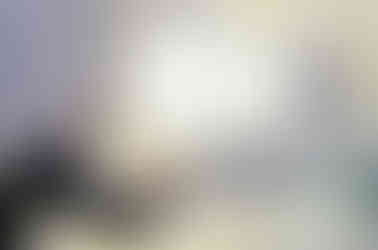Caricature in Animation: Bringing Life and Humor to Characters
- Dylan King
- Mar 12, 2023
- 3 min read
Animation is a medium that allows artists and storytellers to bring characters to life in ways that live-action cannot. Through animation, characters can have exaggerated movements, express emotions in unique ways, and be designed in fantastical shapes and forms. One of the key tools that animators use to enhance these aspects of character animation is caricature.
Caricature is the art of exaggerating certain features or characteristics of a subject to create a humorous or satirical effect. In animation, caricature is used to amplify the unique qualities of a character, whether it be their physical appearance, personality traits, or mannerisms. By emphasizing these attributes, caricature can make characters more memorable, relatable, and entertaining to audiences.
If you want to learn about what caricature is, and how to use it as a tool in your art, check out our Art of Caricature Lesson
History of Caricature in Animation
Caricature in animation dates back to the early days of the medium, where animators such as Tex Avery and Chuck Jones at Warner Bros. Studios pioneered the use of
exaggerated animation to create dynamic and humorous characters. Their work on classic cartoons such as Bugs Bunny, Daffy Duck, and Porky Pig not only set the standard for animation in the Golden Age of Hollywood, but also inspired generations of animators to come.
Another caricature master is my dear friend, T. Dan Hofstedt! If you don’t know T. Dan by name, you certainly know his work. He has worked on numerous animated films, and helped pioneer Motion Capture animation. As a boy, he grew up learning about the art of caricature from his father who drew caricature portraits of people at Disney in the 50s-60s. It was through his ability to make whimsical and dynamic portraits of people that ultimately became his point of entry into the animation industry.
T. Dan walks though his technique in his Art of Caricature Lesson

Examples of Caricature in Animation
One of the most famous examples of caricature in animation is the character of Homer Simpson from the long-running television series The Simpsons. Homer's physical appearance is exaggerated with his oversized belly, balding head, and stubble. His personality is also exaggerated, with his laziness, impulsiveness, and love for food and drink taken to comical extremes. These exaggerations make Homer a beloved and relatable character to audiences worldwide, despite his many flaws.

Another example of caricature in animation can be seen in the character of Syndrome from the Pixar film The Incredibles. Syndrome's appearance and mannerisms are based on classic comic book villains, with his spiky hair, cape, and maniacal laughter. However, his true caricature lies in his desire to become a superhero despite lacking any innate abilities, and his willingness to go to extreme measures to achieve his goals. These exaggerations make Syndrome a memorable and entertaining villain, adding depth and humor to the film's plot.
Caricature is not limited to physical appearances and personalities, but can also be used in animation to exaggerate movement and actions. For example, in the Disney film The Lion King, the character of Scar moves with a slinking and menacing gait, emphasizing his sinister nature. Similarly, in the DreamWorks film Kung Fu Panda, the character of Po's movements are exaggerated to highlight his lack of skill and comical clumsiness.

Caricature in animation is not only used for comedic effect, but also to add emotional depth and impact to characters. In the Pixar film Inside Out, the emotions of Joy and Sadness are caricatured to represent their respective personalities. Joy is exaggerated with her energetic movements and bubbly personality, while Sadness is exaggerated with her slumped posture and melancholic demeanor. These exaggerations not only make the characters more relatable and memorable, but also add emotional weight to the film's themes of joy and sadness.
My Intro to 2D Animation Course covers a ton of techniques like Character Design and Squash and Stretch that will help you achieve exaggerated, memorable characters.
Caricature is an essential tool in animation that allows animators to create memorable, relatable, and entertaining characters. By exaggerating physical appearances, personalities, movements, and actions, animators can add depth, humor, and emotional impact to their work. From classic cartoon characters to modern animated films, caricature continues to be a vital aspect of animation that enhances the art form and engages audiences worldwide.
Be sure to check out T. Dan Hofstedt's Lesson on Caricature to learn everything you need to know about pushing your characters expressions and emotions to it's maximum potential.

Your animation colleague,
John Pomeroy














Comments